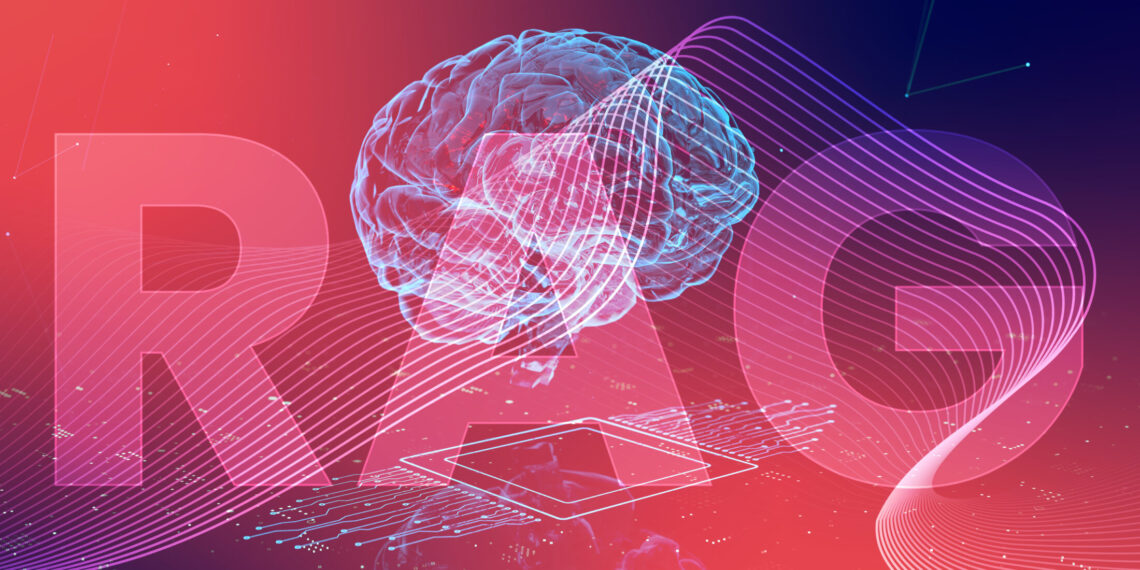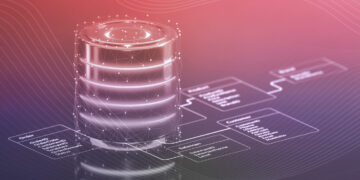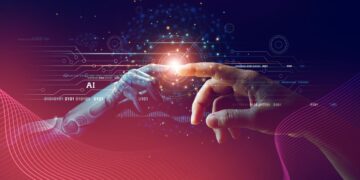Table of Contents
RAG, or retrieval-augmented generation, is a hot topic when we talk about AI. Why?
As we know, large language models (LLMs) are prone to generate information that sounds plausible but is factually incorrect because it relies on the training data provided to the model.
Once trained, they are static, which cannot incorporate events or updates that occur after the training period. This means that they have limited ability to adapt to domain-specific needs. Due to those limitations, it could increase costs and be time-consuming.
On the other hand, RAG fills a gap in large language models (LLMs) and how they work, effortless and in a cheaper way as they include some challenges like the presentation of false, inaccurate, out of date or generic information.
It leverages real-time data retrieval to deliver accurate, relevant, and trustworthy outputs. As we know, in a business context, data is stored internally or externally, and to provide trustworthy output we need a dynamic and flexible system.
RAG, a method that allows to improve the quality and relevance of their outputs when generating answers with generative AI, allows to change this paradigm.
01
of 06
What is Retrieval Augmented Generation?
Retrieval Augmented Generation (RAG) is an enriched AI technique that enables companies to make generative AI more trusted and relevant based on structured and unstructured proprietary data, including emails, PDFs, chat logs, social media posts, and other types of information that could lead to a better AI output.
This technique allows them to embed live data from various internal sources directly into their LLM prompt, and because the source data comes from trusted internal data, it helps reduce incorrect outputs so you can trust the responses to be relevant and accurate.
To have this result, RAG is dependent on the vector database, which is a specialized type of database that stores data in a numeric format that makes sense for AI, and retrieves it when prompted – a process that will be explained in the next chapter.
Putting it simply, RAG helps companies retrieve and use their data, independent of where it is stored, to achieve better generative AI results, adding context from trusted, updated, and relevant data at each prompt, which mitigates issues in standard AI outputs like outdated or generalized responses. This is a step up from other models that are only able to produce outputs that are tailored to a request and can only reference information that existed at the time of their training, for example GPT.
02
of 06
From retrieving relevant information to the generation of a comprehensive response
When it comes to Salesforce, RAG begins with Data Cloud, which helps customers harmonize and unify their data, because it can be activated across different Salesforce applications.
This is because Data Cloud is now accommodating unstructured data such as PDFs, call transcripts, emails, real-time customer engagement data from web interactions, third-party datasets, structured data (CRMs, ERP systems, financial data), and others.
Remember that Data Cloud is the heartbeat of Salesforce data governance within the Salesforce ecosystem, allowing a 360 degree of all data used in the organization.
RAG powers meaningful response generation with Einstein Copilot Search: RAG in Salesforce also uses the newly announced Einstein Copilot Search, which will use the Data Cloud Vector Database to combine semantic search with traditional keyword search.
But how does that work?
First, RAG retrieves relevant information from a database using a query generated by the LLM, which is then integrated into the LLM’s query input and generates an accurate and contextually relevant response.
Retrieval
To generate more valuable and reliable responses, companies need to retrieve the most pertinent data when crafting their prompts. A popular method for achieving this is through semantic search, a key feature in Salesforce’s newly introduced Einstein Copilot Search, that processes a user’s query or question by focusing on its underlying meaning or intent, rather than just the specific keywords it contains.
Augmented
With RAG, the LLM doesn’t need to be first trained because the data is provided by automatically augmenting the prompt itself with the relevant data.
Generation
Finally, the augmented prompt is sent to the LLM, where it is used to generate an output, according to what it was asked.
All these steps basically allow Salesforce to integrate RAG into its Data Cloud, harmonizing structured and unstructured data for AI use. Then, using “Einstein Copilot Search”, RAG combines semantic and natural language to generate output requests.
03
of 06
The main advantages of RAG
RAG is an important tool to empower AI and has many benefits such as improved accuracy, efficiency, and relevance of the generated content. But let’s explore those benefits in detail.
Improved Accuracy
As mentioned earlier in this article, the main benefit of RAG is that an LLM can go beyond training data and retrieve information from a variety of data sources, including customized ones. This promotes more trustworthy generated content, as long as the retrieved information is relevant. Otherwise, your generation could be grounded but off-topic or incorrect.
Up-to-date content
Because it has access to all the data, RAG allows the use of the most recent data when generating a response, overcoming the challenge of LLM’s only pre-trained data.
Transparency
With RAG, the data source is quoted in the generative AI responses, which promotes transparency and trust.
Security
With RAG, the data doesn’t need to be part of the LLM, meaning that LLM responses will never expose data to users who don’t have access to it. Developers can restrict information retrieval to different authorization levels. This is an important feature because data security is one of the main concerns regarding generative AI.
More developer control
With RAG, developers can work more efficiently, either testing or improving their applications, as they can control and change the LLM’s information sources to adapt to different needs.
04
of 06
RAG use cases
RAG can be applied in different areas to achieve different goals and enhance the quality and relevance of the outputs generated by language models. Here are some examples:
Customer Support and Personal Assistants
Chatbots and Virtual Personal Assistants can use RAG to retrieve product and customer information, FAQs, and real-time data such as weather information or news, to provide detailed and accurate responses.
Education
In this sector, RAG can be used to provide students with detailed explanations and additional context for complex subjects.
Research
Through RAG, we can obtain the quotation of sources, making it useful for answering scientific questions with information from academic papers and studies.
Healthcare
Systems powered by RAG technology can provide information from patient records to assist in diagnoses or treatments based on the latest available information.
Legal
Legal research can be streamlined with RAG systems, helping in the search for relevant case law and statutes.
In the end, with RAG, users can have conversations with data repositories, so the applications for RAG could be multiple times the number of available datasets.
05
of 06
Challenges, Customisation and Feedback in RAG Integration with Data Cloud
The integration and customization of RAG in Data Cloud, according to Claire Cheng, presented several key challenges.
First, in adapting the system for different types of data and enhancing its ability to process information using AI. This required changes to how the system receives, transforms, and interacts with data from various sources.
Second, RAG is a closed system dedicated to Service GPT (designed for specific use cases). To be compatible with Data Cloud, the system needed to become open and customizable to support a broader range of tasks, users, and inputs.
Third, there was a need to optimize RAG to process the large scale of data handled by Data Cloud.
Overall, a significant effort was required to redesign the system’s architecture to make it usable with Data Cloud.
06
of 06
Join us and become a RAG user company
With the development of these technologies, it is expected that they keep improving and becoming more tailored and personalized.
Salesforce has emerged as a leader in the AI-driven customer relationship management (CRM) space, offering tools like Data Cloud and Einstein Copilot Search, which are uniquely positioned to support Retrieval Augmented Generation (RAG). Stellaxius, with its extensive experience in CRM integration and AI solutions, serves as a critical partner in helping organizations maximize the potential of RAG technology within the Salesforce ecosystem.
Implementing RAG is not just a technical adjustment—it’s a strategic decision that requires thoughtful integration to ensure it aligns with a company’s specific objectives and workflows. Stellaxius brings extensive experience in customizing Salesforce solutions and implementing generative AI tools to meet the unique needs of diverse organizations.
By partnering with Stellaxius, companies benefit from:
- Tailored RAG Implementations
- Enhanced Data Security and Compliance
- Ongoing Optimization and Support
- Remote-First and International Experience
By leveraging Salesforce’s advanced AI capabilities and Stellaxius’s expertise in RAG integration, organizations can unlock a new level of intelligence and efficiency in their operations. With RAG, they’re empowered to provide highly accurate, real-time responses, create content grounded in the latest information, and build AI-driven tools that are both secure and relevant.
Stellaxius stands ready to guide companies in this journey, offering the expertise and support needed to make RAG a valuable asset in their digital transformation.







